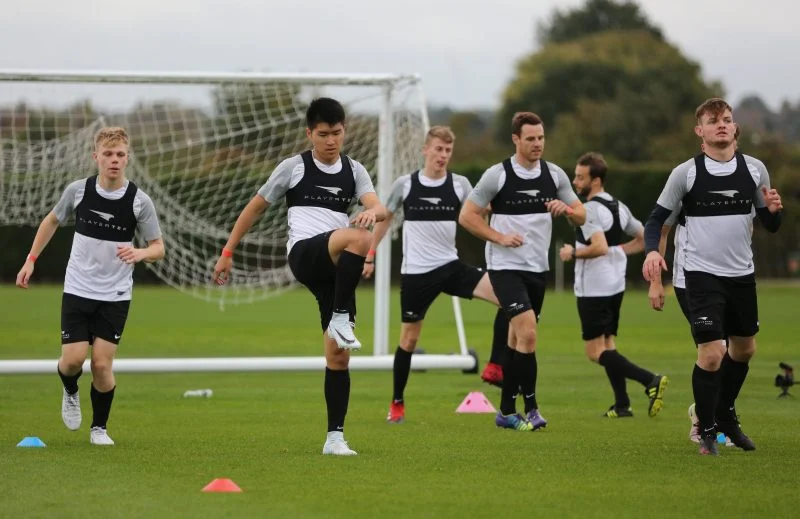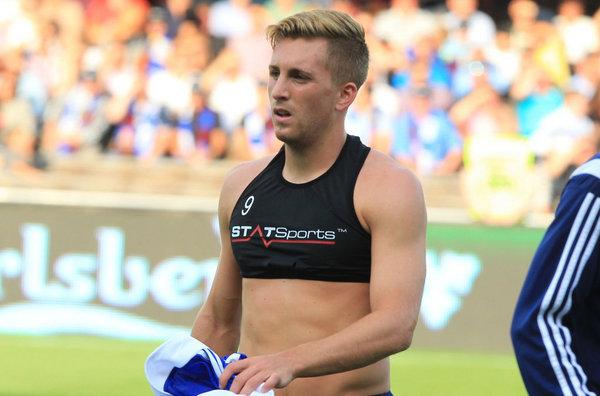Global Positioning System technology has been used in professional sport for some time, in both training sessions and during competition. Through the use of Electronic Performance and Tracking System (EPTS) devices, teams can track player’s movement on the pitch and collect vast amounts of data on their performance; such as their running speed, distance run, their position on the pitch, their heart rate and their body's work rate.
These 'wearable' devices and the data they collect have multiple uses, one major of them being the prevention of injuries. By tracking a player's sprints and distance covered the coaching staff can determine whether such player is fit for their next game or could benefit from resting. According to Taylor from iSportAnalysis (2017), studies have shown that when athletes train at a higher rate than the season's average there tend to be more injury occurrences. An increase in training and game-play intensity without adequate recovery can results in an increase of injury rate. Coaches can now predict and prevent player injuries by monitoring these patterns from the GPS metrics obtained, and can make the right decisions by knowing whether their player is over training, whether they need a rest or whether they are in peak condition.
However, GPS is not only used to track a player's health and fitness. The value of the data collected through these EPTS devices goes beyond that. This data can also map a player's positioning on the pitch to help identify the most frequent spaces covered and provide insights on how well various areas were utilised. This can then provide a valuable source of information to adapt training and development of specific players according to their physical and tactical needs.
The type of data captured by the GPS trackers can vary largely by provider and the needs of the team using the data. As with most areas in performance analysis, the data captured by GPS needs to be used and analysed appropriately in the context of the sport, athlete or situation. An isolated data point can only provide very little insight on what is really happening, if any at all. This is why the use of GPS metrics require the combination of multiple variables in order to obtain a complete picture. For instance, two athletes may run the same distance at the same average speed, but taking a look at heart rates or speed intervals can provide a closer look into their fitness and amount of amount of load each body is taking to deliver that outcome. The most common data point being collected are:
Total distance covered
Average running speed
Total running distance (high pace)
Total sprinting distance (full speed sprinting)
Average acceleration time
Average deceleration time
Heart rate (to identify athlete's work rate)
Positioning on the field
Time of high intensity play
Time of low intensity play
Athlete's load (the demand on an athlete's body)
G-Force / impact data (for impact sports like rugby)
There are various providers of GPS technologies offering devices and services to professional clubs and athletes. One of the technology providers is Exelio, which sells its technology under the brand name GPEXE and partners with clubs such as AC Milan or AS Monaco. Their strength in the market can be attributed by its 20 Hz device frequency, much higher frequency devices than that of most of its competitors. With this high frequency GPEXE achieves a higher accuracy of information when tracking a player's changes in speed and direction, something a lot of providers struggle to do with lower frequencies. However, there are many important players in the GPS Sport technology industry partnering with elite sport clubs:
Partners with: Bayern Munich FC, Paris Saint Germain FC, Wales Rugby and NFL's Steelers, amongst others.
Partners with: Liverpool FC, Celtic FC, Wigan Athletic FC and Malmo FF, amongst others.
Partners with: Tottenham Hotspurs FC, Portugal FA, Manchester City and West Ham United, amongst others.
Partners with: Real Madrid FC, Chelsea FC, Atletico Madrid and Spain FA, amongst others.
Partners with: AC Milan, Inter Milan, Sampdoria and AS Monaco, amongst others.
Historically, acquiring this technology was cost-prohibitive for most teams, even at professional levels. However, as technology advances these devices are becoming more budget-friendly allowing more teams to adopt them for their training sessions and player development. Some lower league clubs are even loaning the technology from the providers in exchange of free usage of the data collected for research and development to improve their products.
These wearable pieces of equipment are normally placed on athlete's torsos. They are composed of various sensors to track different types of metrics and allow to store and transfer the data to a common data repository. According to SimpliFaster (2017), there are 4 types of sensors used in Player Tracking devices today: an accelerometer, a gyro, a magnetometer and a GPS module. Each sensor has a unique function that compliments the role of each other sensor. For instance, an accelerometer measures the changes in rates of perceived forces while a gyro give the data from the accelerometer direction by using the Earth's gravity. Similarly, the magnetometer will use the Earth's magnetic field to also provide direction to the data from the accelerometer. On top of that, the GPS module completes the data with satellite-positioning information.
However, no modern tracking device has been proven to be 100% accurate and reliable. An example of that is that these torso devices may be missing important information about the center of gravity of each athlete. Also, the data captured may often be indicative rather than factual due to the limitations of GPS accuracy today. Advances in technology will show an improvement in coming years on these devices and their reliability. Not only by extending battery life or reducing the size of the wearable equipment but developments in sensors and data capturing technologies will drive the future of GPS tracking in sport. For example, foot sensors are currently being explored and can prove to provide a lot more precise information of the forces and gravity of each athlete.


